Although it’s not nearly as famous as the Golden Gate Bridge or the Bay Bridge, the Richmond-San Rafael bridge has its own appeal. Connecting Marin County to the East Bay in the San Francisco Bay Area, it’s also pretty long. In fact, at five and a half miles, it’s a mile longer than the Bay Bridge. I never thought I’d see the day when there was a bike/pedestrian path connecting both sides, much like I’m not sure I’ll ever see a bike/ped path connecting both sides of the Oakland-San Francisco Bay Bridge (though one opened on the Bay Bridge a few years ago connecting the East Bay to Treasure Island).
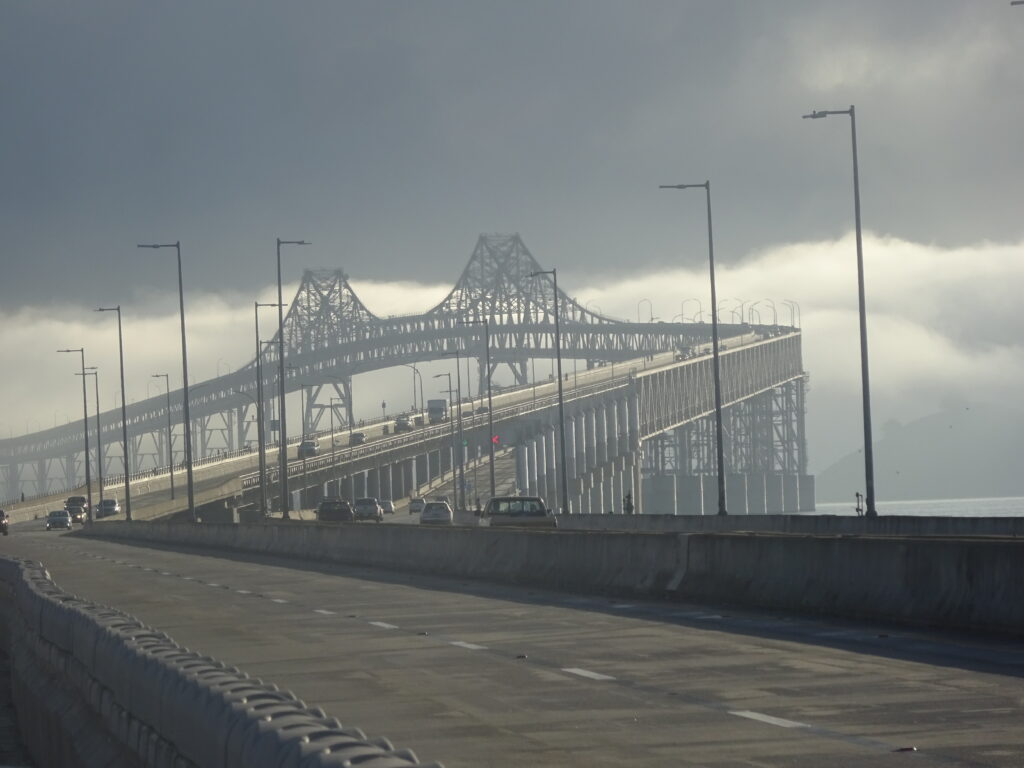
Well, the Oakland-San Francisco Bay Bridge path still seems a decade away at best. But to my surprise, a Richmond-San Rafael bike/pedestrian path opened in November 2019. I rode it for the first time in January, and while it doesn’t have views as spectacular as those on the Golden Gate Bridge (or even the Bay Bridge), it’s well worth cycling.
It’s not as easy to get onto as the other bridges, however. I haven’t yet done so from the San Rafael side, but starting from Berkeley as I did, it’s a good dozen miles or so, including some fairly heavily trafficked wide boulevards near the bridge. There still isn’t a good site for mapping the ride from the East Bay, and Google Maps, as is often the case, gives some twisted directions if you opt to take the Ohlone Greenway and Richmond Greenway bike paths. It’s better, and more scenic, to take the Bay Trail, which runs close to the water for a big chunk before getting to those Richmond streets.
At least the path gets fairly well marked and protected by the time you get to the small town of Point Richmond, a couple of miles or so before the bridge. This is how the bridge toll plaza entry looks, more or less, when you’re driving, as I’ve done quite a few times. Not so picturesque, eh?
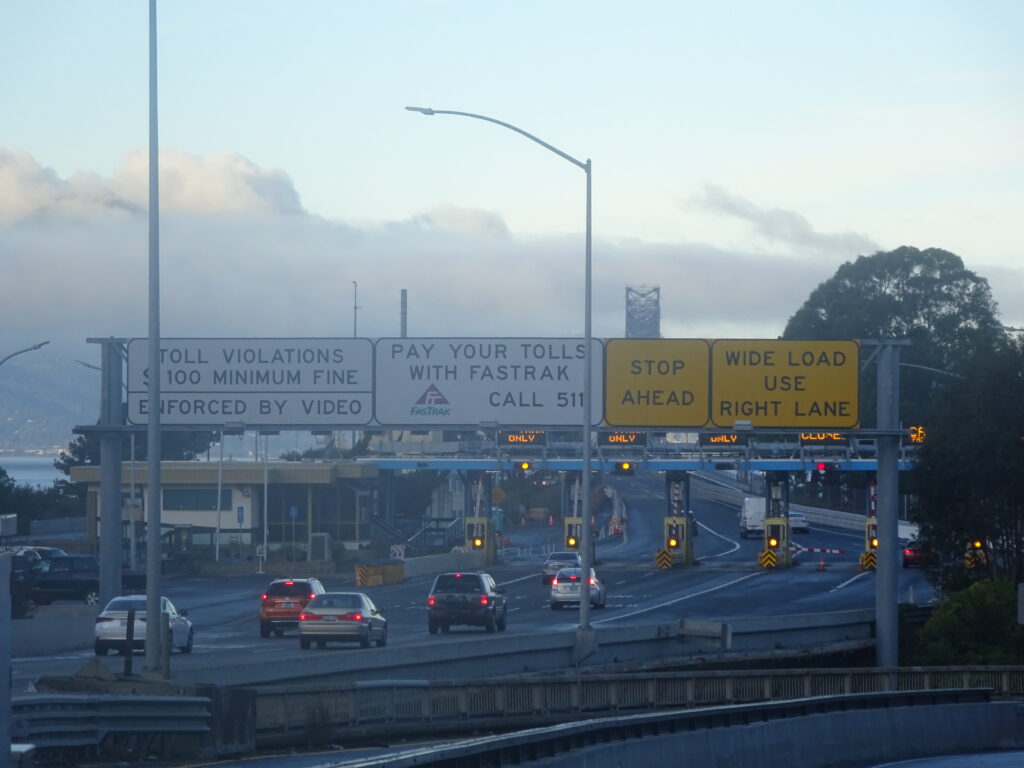
It’s not that much prettier from the section of the path that runs next to the highway right before the bridge, but it’s a little better:
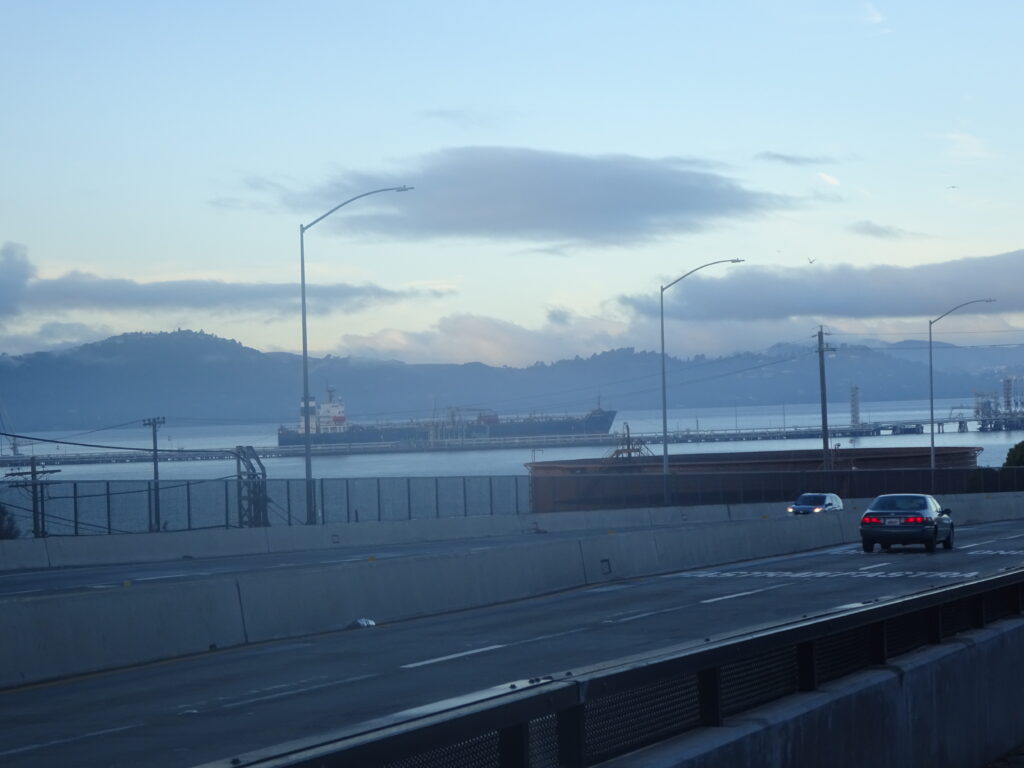
And just a few minutes later you’re on the bridge:
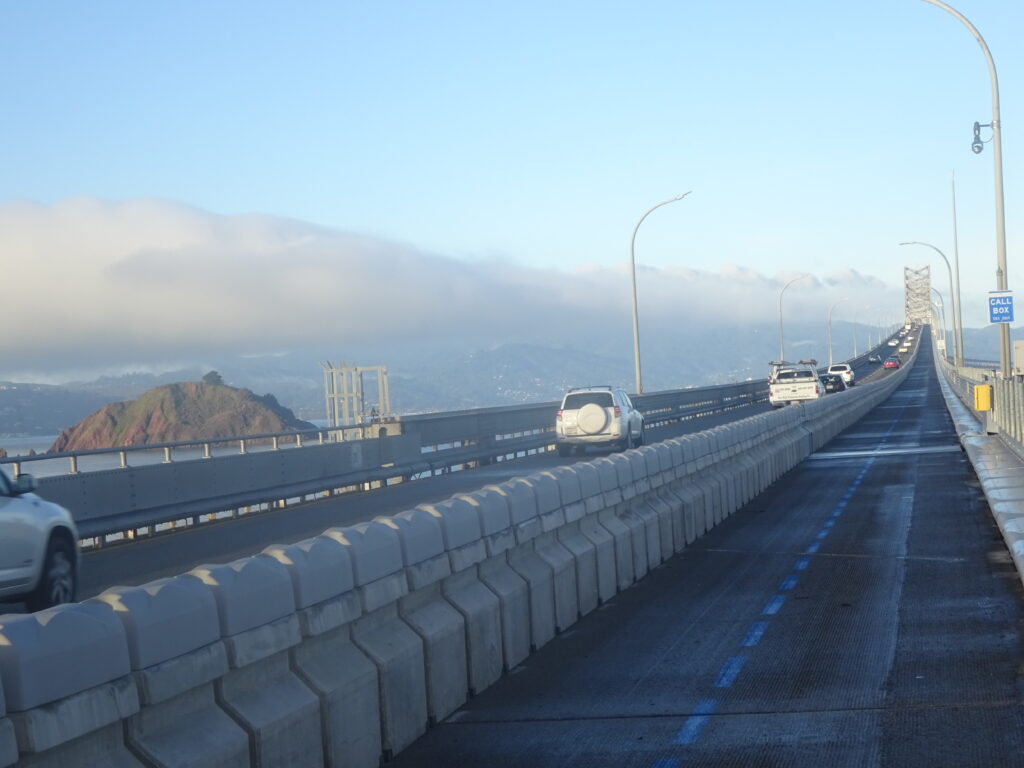
You should of course be in good shape to bike or walk a bridge that’s almost a dozen miles roundtrip. But although it’s not level, really it’s not too steep or hard to navigate, in spite of what you might think from how it looks almost like a roller coaster from certain angles. It’s not as steep or taxing, for instance, as the uphill path from the Bay Bridge toll plaza to Treasure Island. Here’s a shot at about the halfway point, near the Marin County line:
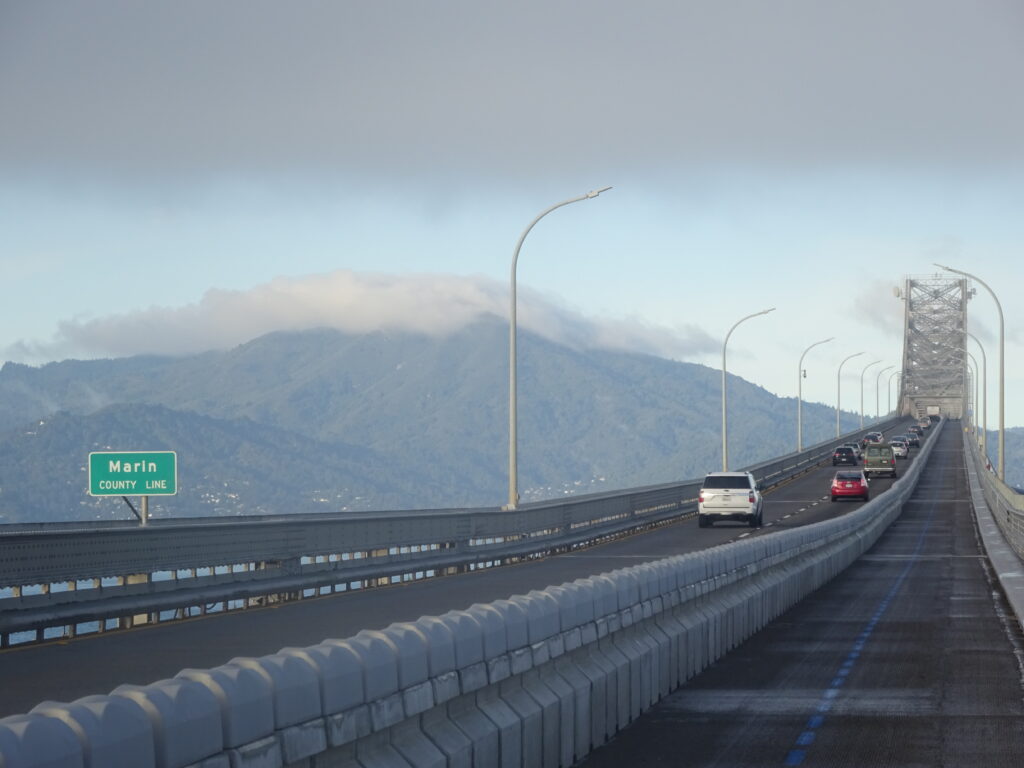
You get some views of San Quentin prison as you approach the San Rafael side:
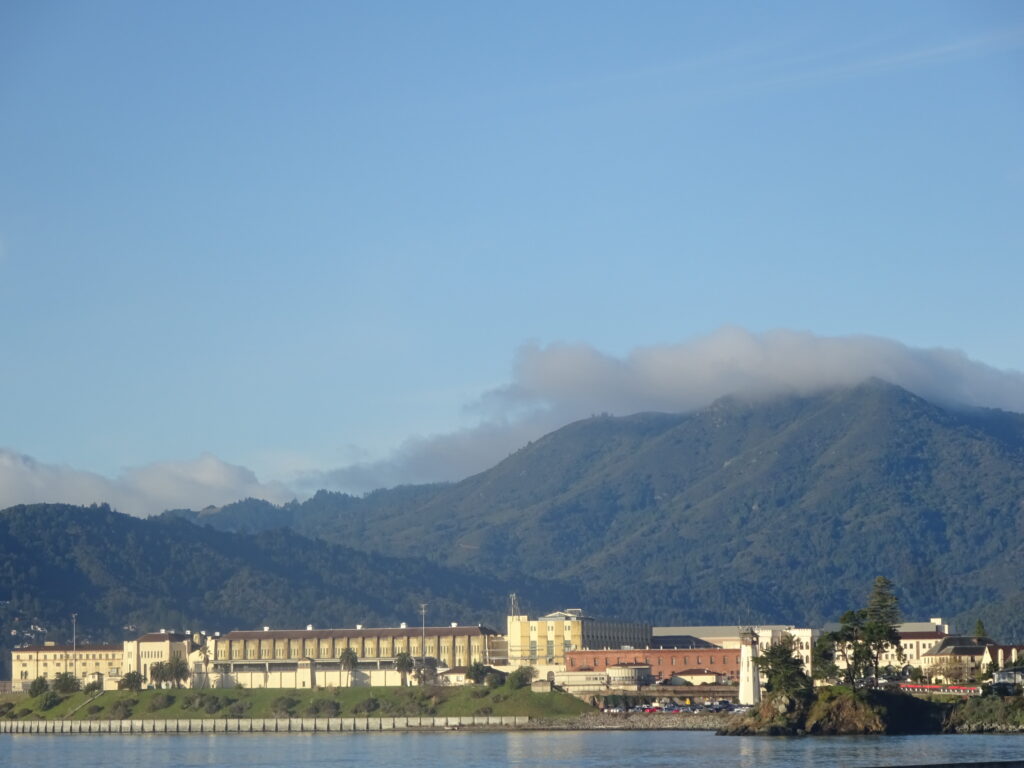
If you’re really up for making a day of it, you can continue on bike paths for quite a while on the San Rafael side. There’s nothing too special when you get off the bridge, as you see here:
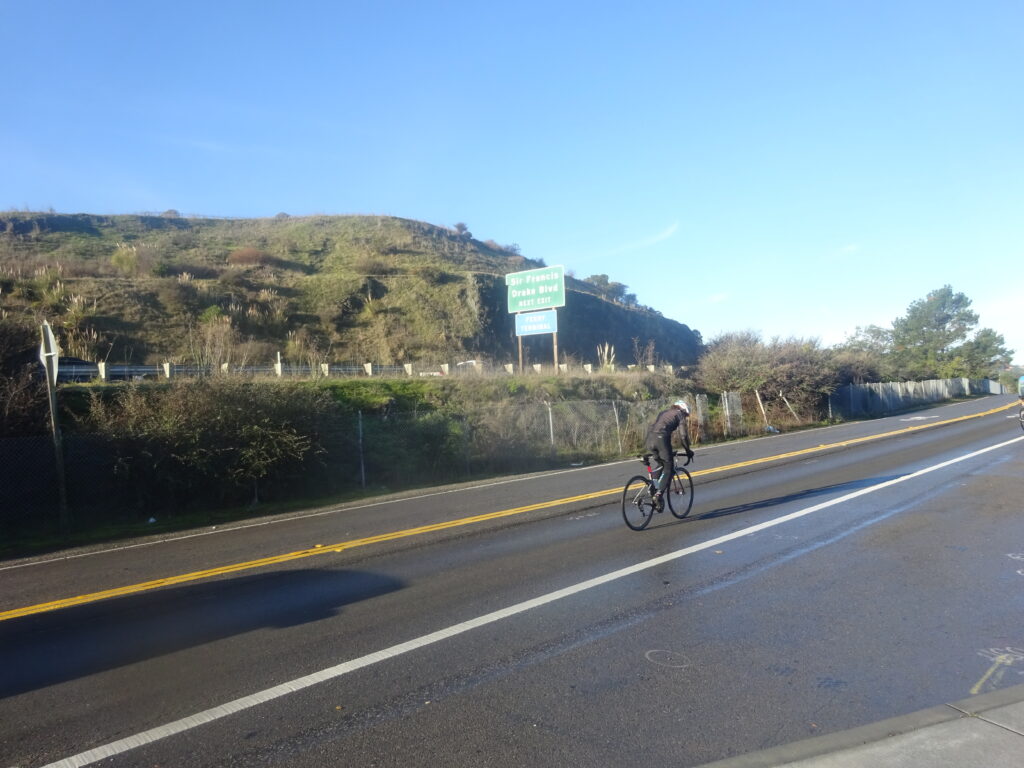
The path runs along the north side of the bridge, so you don’t get unobstructed close-up views of small, uninhabited Red Rock Island to the south. This is about the best you’ll get:
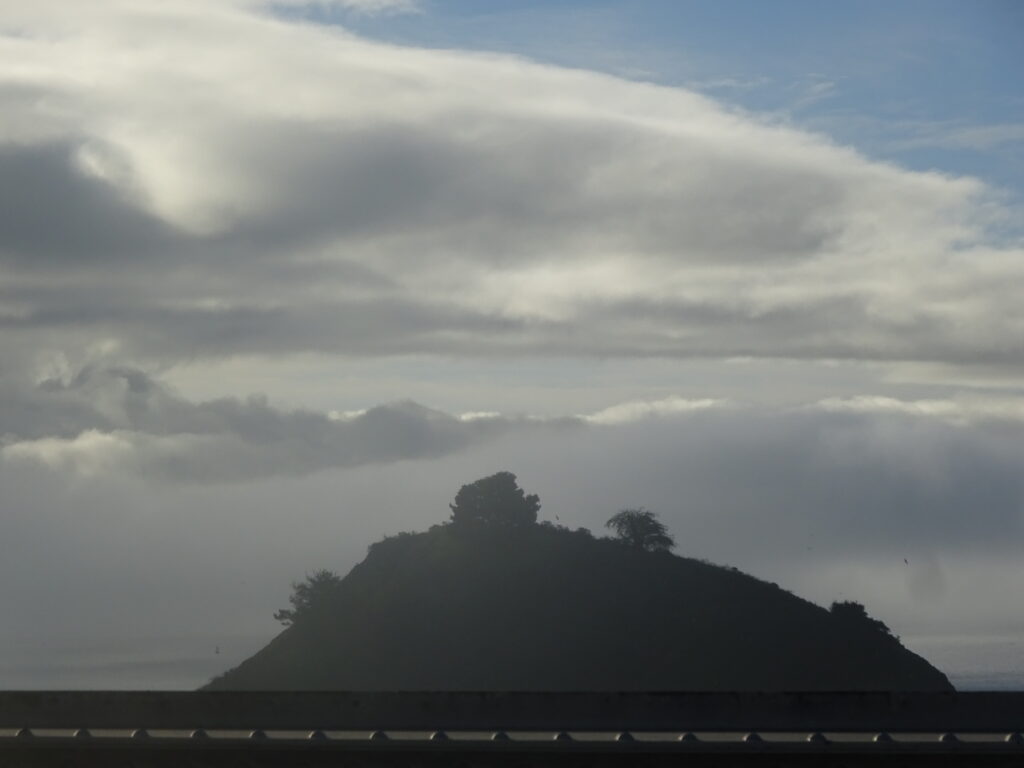
But you do get a good view of Point Molate, a little to the north of Richmond on the East Bay side:
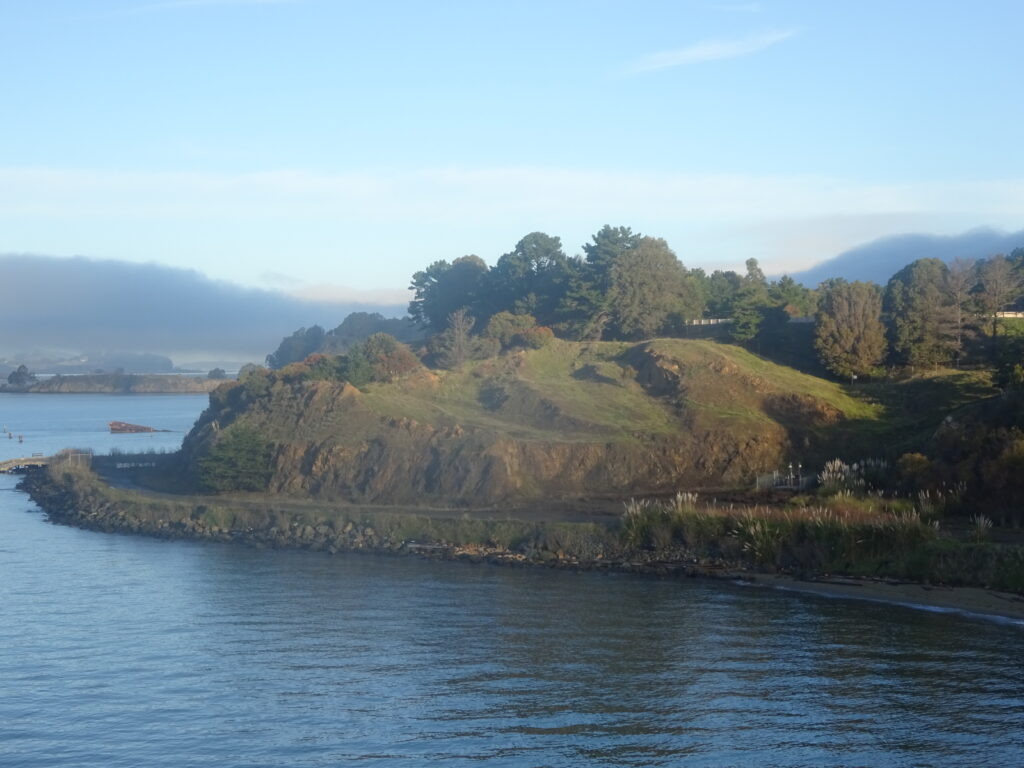
There’s a narrow beam between the path and the northern edge of the bridge that’s theoretically walkable, as this fellow and his dog prove, though definitely not bikable:
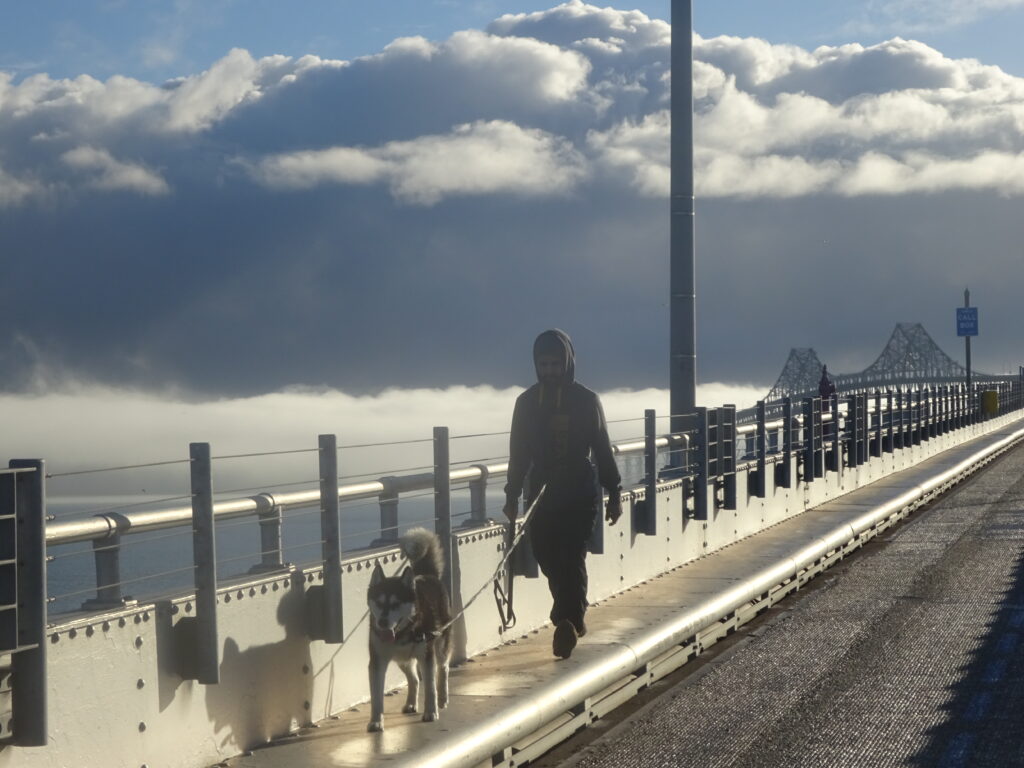
The small town of Point Richmond, an entirely different town than its much larger Richmond neighbor, makes for a quaint if very brief detour on the way to the bridge and back:
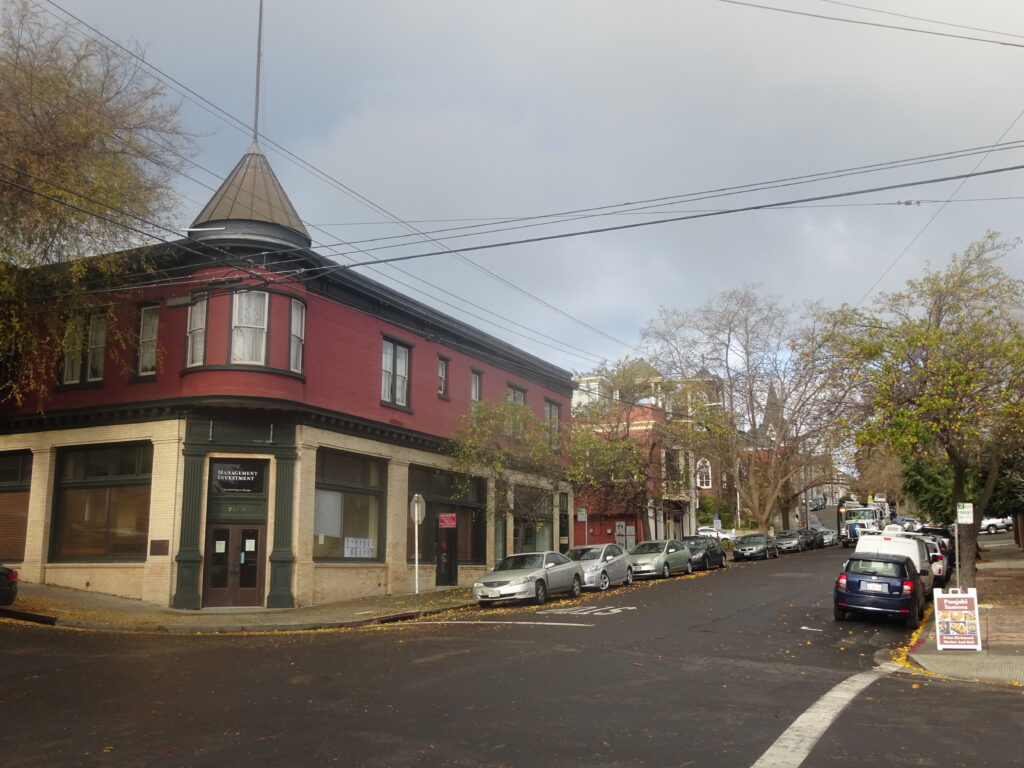
All the online info I can find says the path is open 24 hours a day, but this sign at the entrance on my ride seems to indicate that’s not always the case. I can’t find any hotline or website that gives specific hours in the event of changes, and if anyone knows of such a resource, please let me know and I’ll add a link to this post.
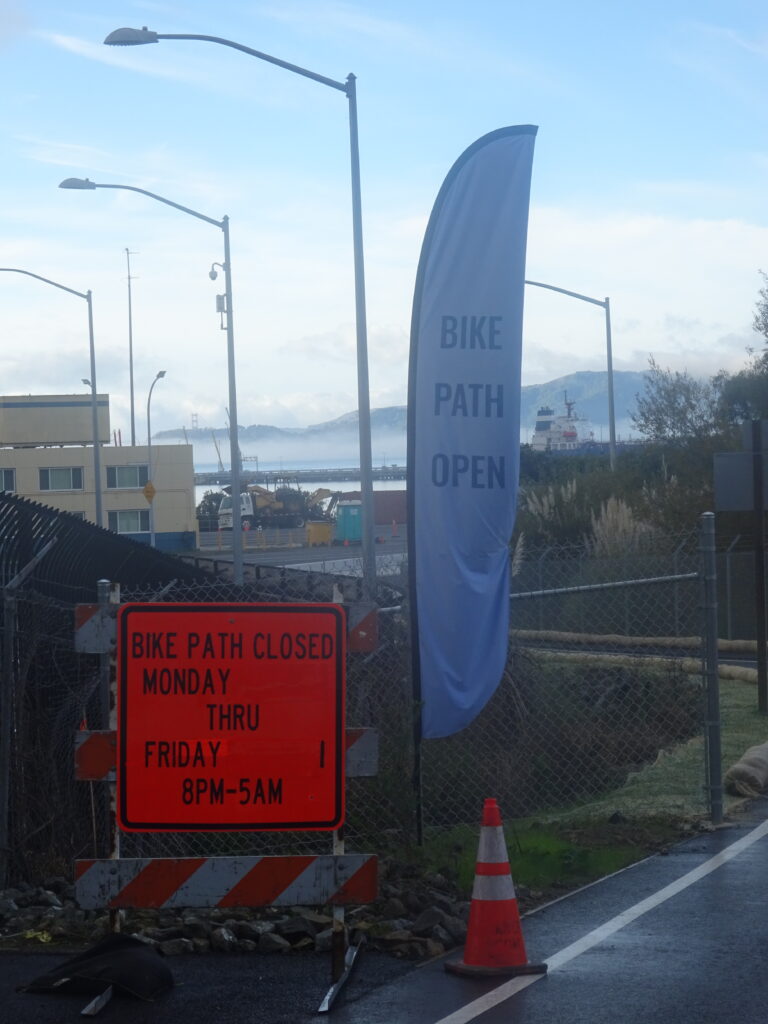
Well, here are my questions: Thinking about this from the perspective of a worker who commutes from East Bay to Marin with some regularity, and a cyclist who could use this route for his commute, as well as a recreational cyclist who might use it as part of your exercise routine, “Is/was dedicating this lane to cyclists and pedestrians worth it?” Secondary considerations: Are lots of cyclists and peds using this to commute? Does it pass cost/benefit analysis? Are we inconveniencing thousands of drivers for the benefit of a few cyclists? Are we likely to see significant numbers of drivers abandon their cars in order to enjoy the health and climate benefits of cycling for their daily commute? Are we really just funding cyclists hobby/recreation/exercise? Is it just too difficult/arduous to ever attract significant numbers of cyclists (and pedestrians…)? Will recreational users find it so great they use it in large numbers? Is having the lane reserved for cars during commute times, and switching to bikes and peds during recreational hours and weekends a good compromise? As a cyclist and commuter, will you be cycling it regularly, or only very occasionally?
These are difficult questions that may not have hard and fast answers, but as a cyclist/driver, you have valuable perspective to offer opinions. I don’t really have a dog in this fight, as I don’t travel to the East Bay much, but I tend to sympathize with workers more than recreational users, and want my tax dollars spent to benefit the masses, not just the elite few.
These are a lot of questions to answer at once, and replying to all would make for a longer blogpost than the one upon which this comments. Not many cyclists have been on the path on the four times I’ve cycled it, and I doubt any pedestrians would use them to commute, though some are on there for recreation and exercise. I hope more and more people use it as time goes on and awareness of the path spreads. I work at home and only sometimes teach classes in Marin, and while the path is open 24 hours a day, I don’t feel safe bicycling back 25 miles from my night classes, with a route that would go through some heavily trafficked or empty neighborhoods to and from the bridge. I will use it once a week for eight weeks in the spring when I’m teaching in San Rafael in the daytime. I’d like enough riders to use this for commute so that the path would pay itself back in the environmental benefits of having less cars on the road.